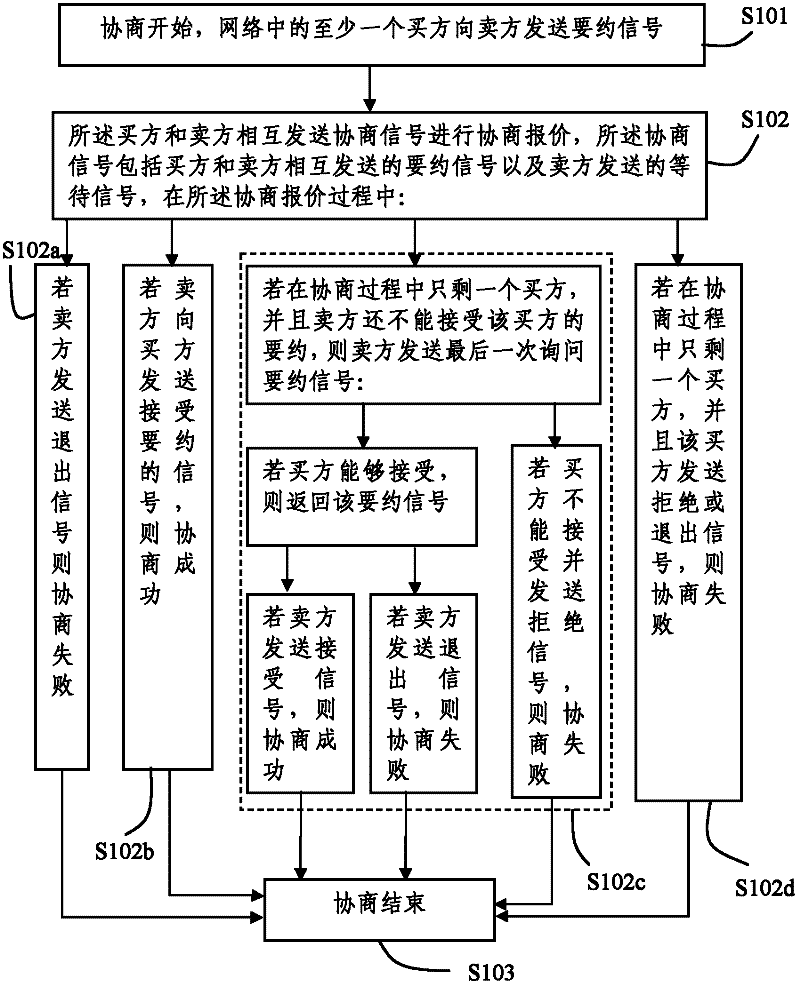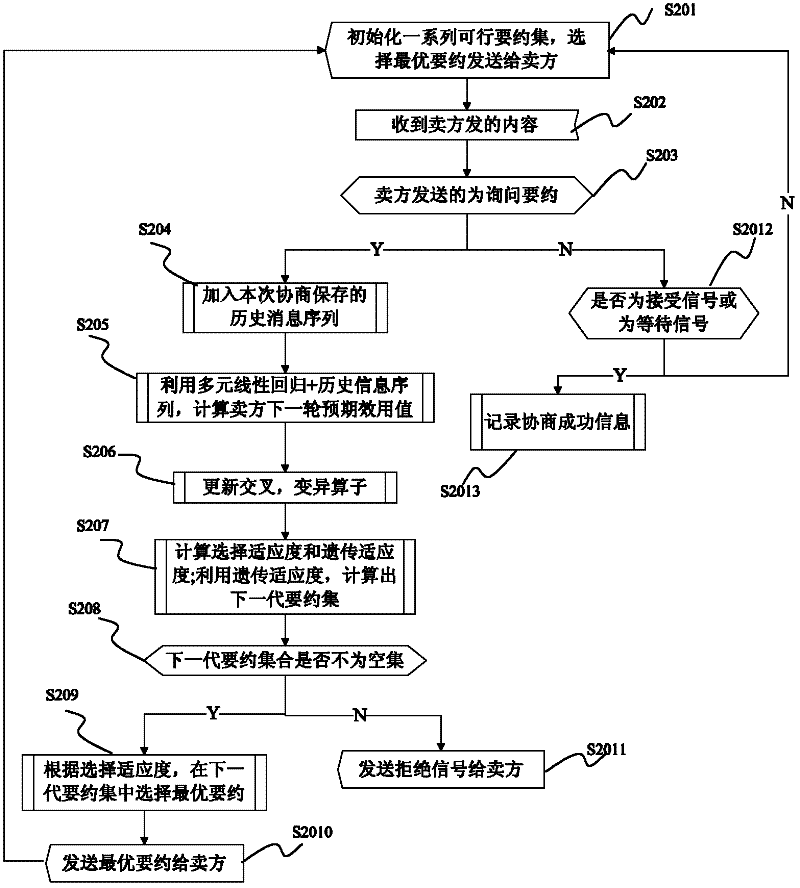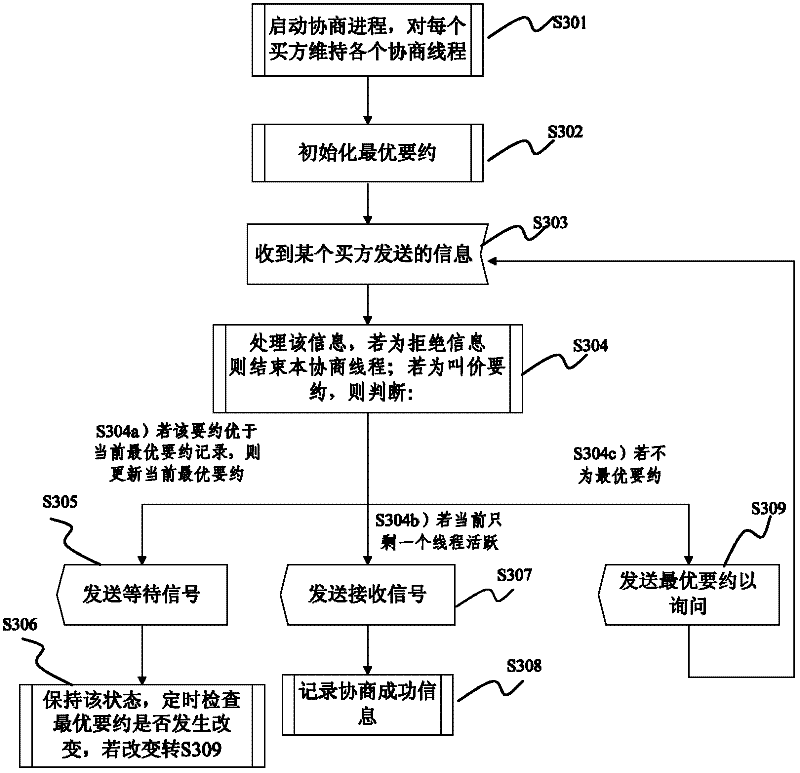Service-based consultation method in mobile ad-hoc networks
A mobile self-organization and network technology, applied in the field of network information interaction, can solve problems such as waste of node resources and communication bandwidth, failure to reach consensus on negotiation results, etc.
- Summary
- Abstract
- Description
- Claims
- Application Information
AI Technical Summary
Problems solved by technology
Method used
Image
Examples
Embodiment 1
[0073] Such as figure 1 As shown, a service-based negotiation method in a mobile ad hoc network includes the following steps:
[0074] S101: The negotiation starts, and at least one buyer in the network sends an offer signal to the seller;
[0075] S102: The buyer and the seller send negotiation signals to each other to negotiate a quotation, and the negotiation signals include an offer signal sent by the buyer and the seller and a waiting signal sent by the seller. During the negotiation and quotation process:
[0076] S102a) If the seller sends an exit signal, the negotiation fails and go to step S103;
[0077] S102b) If the seller sends a signal to the buyer to accept the offer, the negotiation is successful and go to step S103;
[0078] S102c) If there is only one buyer left in the negotiation process, and the seller cannot accept the buyer's offer, the seller sends a last offer signal:
[0079] If the buyer can accept, then return the offer signal: if the seller sends ...
Embodiment 2
[0127]In this embodiment, a network of 1km*1km is used, and one service seller node and 10 buyer nodes are randomly distributed. Simulate the MANETS network environment, and set the network to have the following properties: nodes can be moved after deployment, nodes communicate wirelessly, all nodes are isomorphic, each node has a unique address, and all nodes are time-synchronized.
[0128] Assuming that the negotiated service is data forwarding, the negotiation attributes include three items, which are data packet size, forwarding rate, and forwarding cost. Different benefit functions related to the three attributes are set for each buyer node to simulate different node resource situations. Two types of data packets are defined, the negotiation signal data packet is 512bit, and the negotiation attribute data packet is 1024bit. The transfer rate of these packets is 1Pkt / s.
[0129] The energy model used is C p For the communication cost, it is assumed that each node is e...
PUM
 Login to View More
Login to View More Abstract
Description
Claims
Application Information
 Login to View More
Login to View More - R&D
- Intellectual Property
- Life Sciences
- Materials
- Tech Scout
- Unparalleled Data Quality
- Higher Quality Content
- 60% Fewer Hallucinations
Browse by: Latest US Patents, China's latest patents, Technical Efficacy Thesaurus, Application Domain, Technology Topic, Popular Technical Reports.
© 2025 PatSnap. All rights reserved.Legal|Privacy policy|Modern Slavery Act Transparency Statement|Sitemap|About US| Contact US: help@patsnap.com



